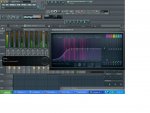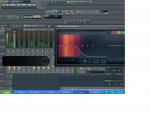TheMarksman
ThaMarksman
I have always wonder how to get a clean mix so for the past couple months
i started cutting the lows..
in my instruments believe it or not there are still bits of unwanted frequency
on your instruments even lead sounds that muddy up the mix
I learned this trick at a recording class at the community college ,its called eq sweeping
the goal is to find the sweet spot for your sounds and eliminating the unwanted frequencies See the pic

I also have done this with my kick drum cutting the mid and treble ,now i know this is all bias as we produce all get unique with the kicks see pic
But this tremendously increases Clarity you will find that your mix is clear and you can hear your kick snare and hats much better
I also found that cutting frequency below 50 Hz will clean up everything and will increase cleanliness even in bass and sub i cut below 50hz
i started cutting the lows..
in my instruments believe it or not there are still bits of unwanted frequency
on your instruments even lead sounds that muddy up the mix
I learned this trick at a recording class at the community college ,its called eq sweeping
the goal is to find the sweet spot for your sounds and eliminating the unwanted frequencies See the pic

I also have done this with my kick drum cutting the mid and treble ,now i know this is all bias as we produce all get unique with the kicks see pic

But this tremendously increases Clarity you will find that your mix is clear and you can hear your kick snare and hats much better
I also found that cutting frequency below 50 Hz will clean up everything and will increase cleanliness even in bass and sub i cut below 50hz
Last edited:
